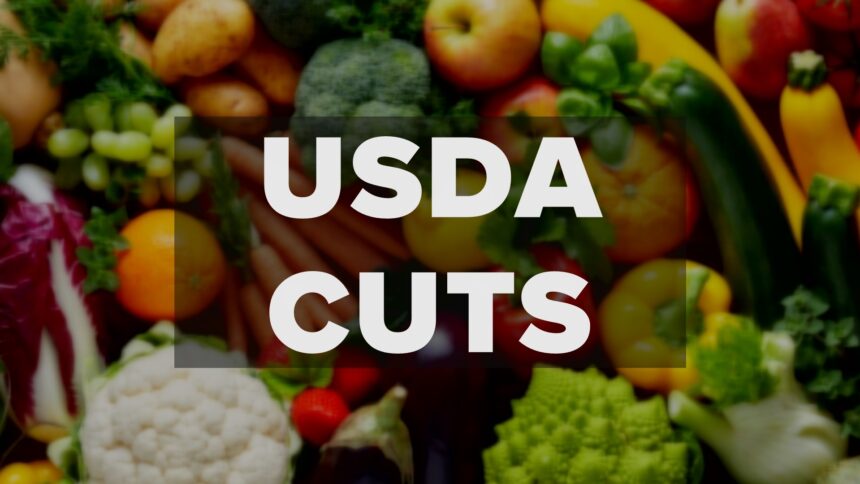Severe Cuts to USDA Funding Hit North Carolina Food Programs
In a significant blow to food security, recent reductions in funding from the U.S. Department of Agriculture (USDA) are severely impacting food banks and school meal programs across North Carolina. This situation comes as the USDA has cut vital federal programs that together contribute over $1 billion annually to food assistance initiatives nationwide.
Local Impact at Riverside High School
At Riverside High School in Durham, North Carolina, the nutritional program relies heavily on local produce, sourcing ingredients from nearby farms. Jim Keaten, the program’s director, emphasizes the importance of supporting local agriculture, stating, “We receive local shredded carrots, cucumbers, and lettuce because we feel it is essential to support our community.”
However, these local supply chains are threatened by the recent funding cuts. Keaten expressed his immediate concern, stating, “When I heard the program funding was terminated, my first thought was about how we are going to replace these funds that support our local food initiatives.”
Details of the Funding Cuts
Earlier this year, the White House made the decision to eliminate funding for two crucial programs: the Local Food for Schools and the Local Food Purchase Assistance Cooperative Agreement. The former experienced a reduction of $660 million, while the latter was cut by $420 million.
The Economic Ripple Effect
The ramifications of these cuts can be seen in Hurdle Mills, where Pine Knot Farms, a local supplier, has lost significant revenue. Co-owner Linda Leach-Hughes reported that in the past year, the farm generated $150,000 through sales to schools. The loss of this funding is described as “devastating” for the local economy.
Leach-Hughes remarked, “Without this extra income to support community members, we may be forced to lay off employees.” The farm is also a vital contributor to the Food Bank of Central and Eastern North Carolina, which now faces a $2 million deficit due to the USDA cuts.
Further Concerns from Local Leaders
Amy Beros, the president and CEO of the food bank, voiced her frustration, saying, “We are in one of the worst hunger crises in decades. These cuts will only increase the demand for food assistance.” She highlighted the dilemma faced by families who must choose between essential healthcare and basic nutrition.
The ongoing struggle for food security leaves many questioning the priorities of government policy. Leach-Hughes posed a poignant question: “How can we expect to make America great again if we are denying food to those who need it the most—children, seniors, and those in care facilities?”
The Broader Context
The cuts to these programs are compounded by a growing need for food assistance in North Carolina and beyond. The state’s food banks are now scrambling to fill the gaps left by the funding reductions, with local farmers and suppliers caught in the crossfire.
| Program Cut | Funding Loss | Impact Area |
|---|---|---|
| Local Food for Schools | $660 million | School Meal Programs |
| Local Food Purchase Assistance | $420 million | Food Banks |
| Total Funding Loss | $1.08 billion | National Impact |






